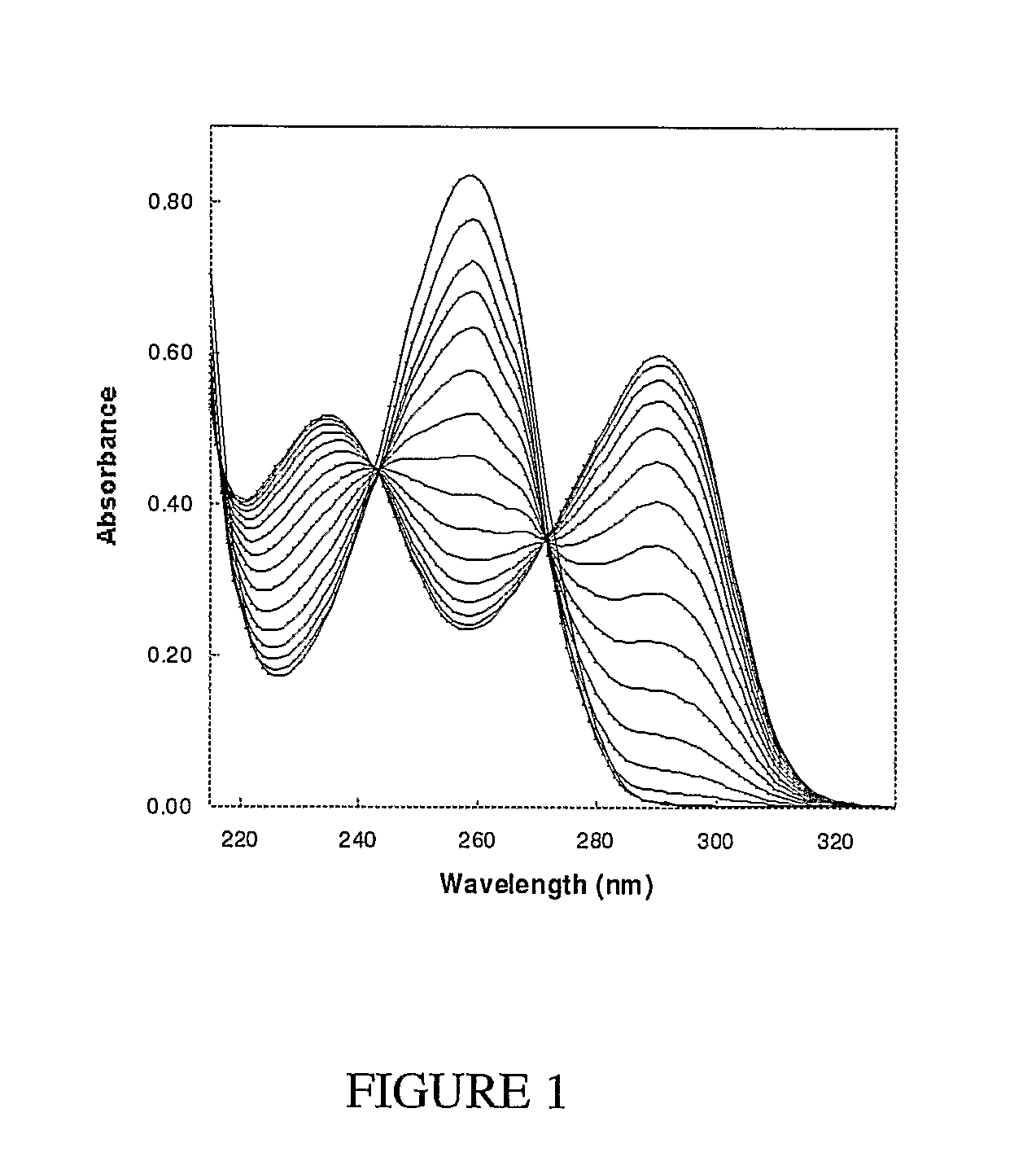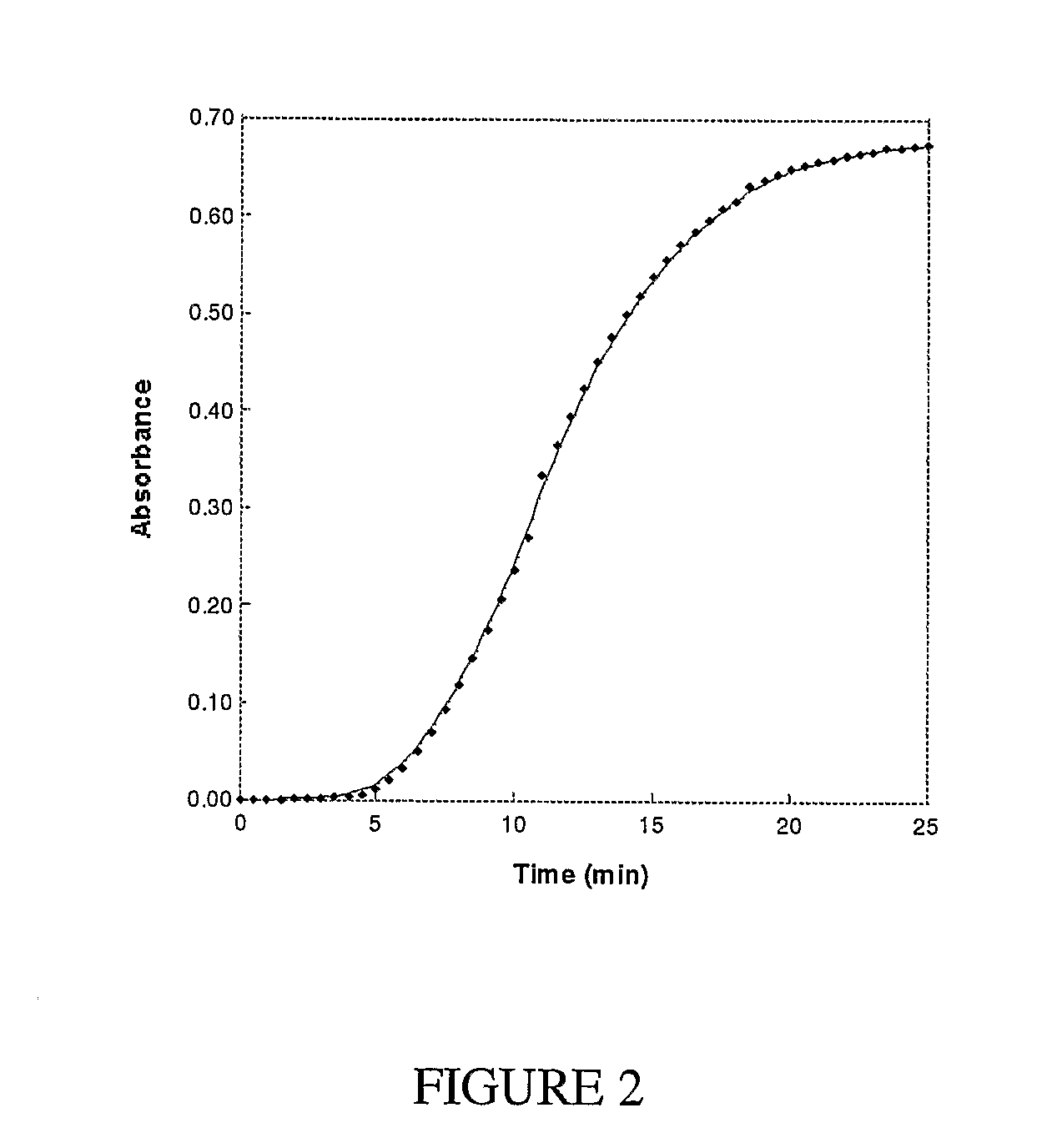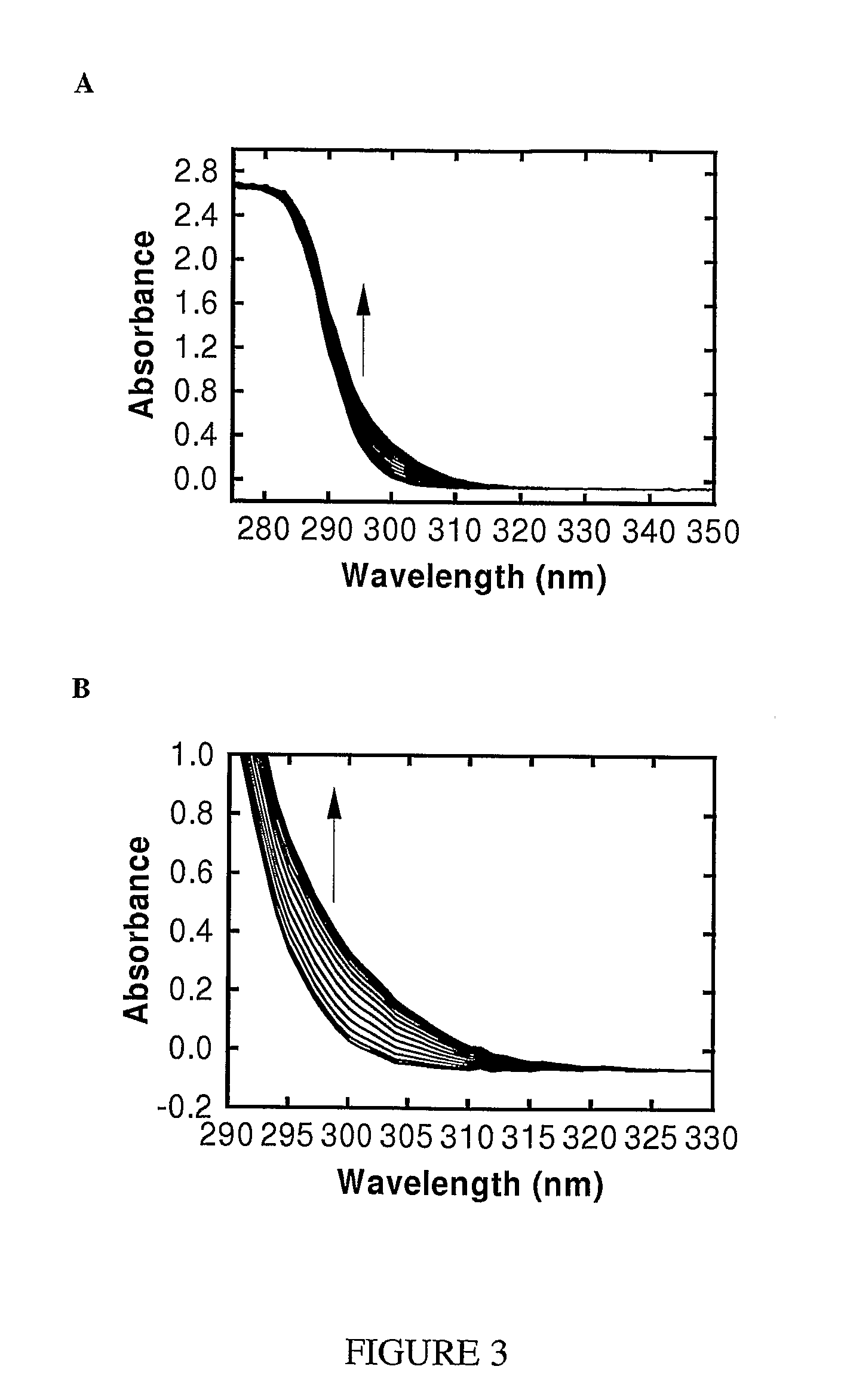Assays for s-adenosylmethionine-dependent methyltransferases
a technology of methyltransferases and s-adenosylmethionine, which is applied in the field of s-adenosylmethionine-dependent methyltransferases, can solve the problems of limited utility, added to the overall margin of error experienced in determining the kinetic parameters, and high cost, and achieves the effect of reducing absorbance and being easy to purify
- Summary
- Abstract
- Description
- Claims
- Application Information
AI Technical Summary
Benefits of technology
Problems solved by technology
Method used
Image
Examples
example 1
Methods
[0108]Expression and purification of MBP-adenine deaminase. The DNA encoding Bacillus subtilis adenine deaminase was PCR-amplified from the pHH1010 plasmid (Nygaard et al., J Bacteria 178:846-53, 1996) and ligated into a pMAL-c2x plasmid vector (New England BioLabs) between EcoR1 and SalI sites. Escherichia coli TB-1 cells were transformed with the resulting plasmid and grown aerobically in 1 L LB broth at 37° C. for 11 hours. Expression of maltose binding protein (MBP) / adenine deaminase fusion protein was induced with 0.8 mM IPTG for 10 hours. Cells were harvested by centrifugation and re-suspended in ˜30 mLs column buffer (20 mM Tris-HCl pH 7.4, 200 mM NaCl, 1 mM EDTA, and 0.2 mM DTT). Cells were lysed via sonication using four 2 min discontinuous cycles on ice using, and the cell debris and unbroken cells removed by centrifugation at 55,000×g, 4° C. for 25 minutes. The supernatant was filtered through a 0.45 μm filter and incubated with 10 mL amylose resin slurry (New Engl...
example 2
AdoMet was Converted to Hypoxanthine Using the Coupling Enzymes, and the Coupled Enzymes Used were Shown not to be Rate Limiting
[0115]In order to yield valid kinetic parameters in the coupled assay, the coupled enzymes used should not be rate limiting, so that the measured rate is determined solely by the methyltransferase activity. The kinetics for the conversion of adenine to hypoxanthine via adenine deaminase were investigated first. Adenine absorbs maximally at 260 nm with an extinction coefficient of 13,400 M−1 cm−1 (The Merck Index: An encyclopedia of chemicals, drugs, and biologicals, 13th Edition, M. J. O'Neil, A. Smith, P. E. Heckelman, S. Budavari (Eds.) Merck & Co., Inc., New Jersey, 2001). Upon adding adenine deaminase, an absorbance decrease at 265 nm was observed as adenine was converted to hypoxanthine rapidly in a stoichiometric fashion (FIG. 7). The kcat for adenine deaminase in 100 mM Tris pH 8.0 was 35.2±0.92 sec−1. The difference spectrum shown in FIG. 7B shows t...
example 3
Investigation of PRMT1 Activity was Investigated Sing Exemplary Inventive Enzyme Coupled Assays
[0116]The inventive coupled methyltransferase assays were applied to the protein arginine N-methyltransferase 1 (PRMT1) as a test enzyme and a peptide corresponding to a 19-amino acid stretch of the in vivo PRMT1 protein substrate fibrillarin (Lin et al., J. Biol. Chem. 271:15034-15044, 1996). Initiation of the reaction with R3 peptide resulted in a decrease in absorbance at 265 nm as in the coupling enzyme control reactions.
[0117]FIG. 9 demonstrates that the reaction rate was dependent upon methyltransferase concentrations. The rate obtained with 2 μM PRMT1 using this continuous spectrophotometric assay with 211 μM R3 (5.1±0.2 μM AdoHyc formed / min) was verified by following [3H] incorporation from S-adenosyl-L-[methyl-3H] methionine into the R3 peptide. The rate observed using the radioactive assay was 4.9±0.6 μM AdoMet consumed / min. Furthermore, the overall reaction rates were independen...
PUM
| Property | Measurement | Unit |
|---|---|---|
| wavelength | aaaaa | aaaaa |
| pH | aaaaa | aaaaa |
| wavelength | aaaaa | aaaaa |
Abstract
Description
Claims
Application Information
 Login to View More
Login to View More - R&D
- Intellectual Property
- Life Sciences
- Materials
- Tech Scout
- Unparalleled Data Quality
- Higher Quality Content
- 60% Fewer Hallucinations
Browse by: Latest US Patents, China's latest patents, Technical Efficacy Thesaurus, Application Domain, Technology Topic, Popular Technical Reports.
© 2025 PatSnap. All rights reserved.Legal|Privacy policy|Modern Slavery Act Transparency Statement|Sitemap|About US| Contact US: help@patsnap.com



